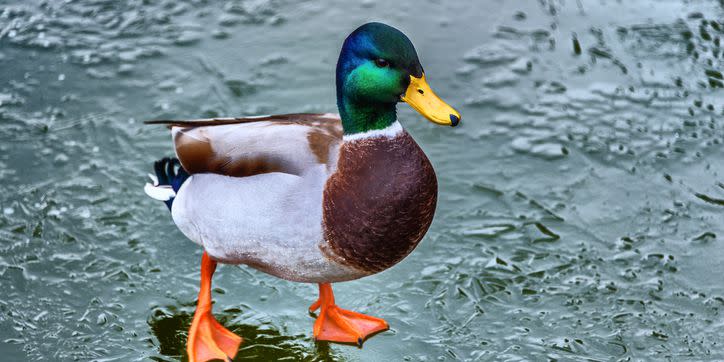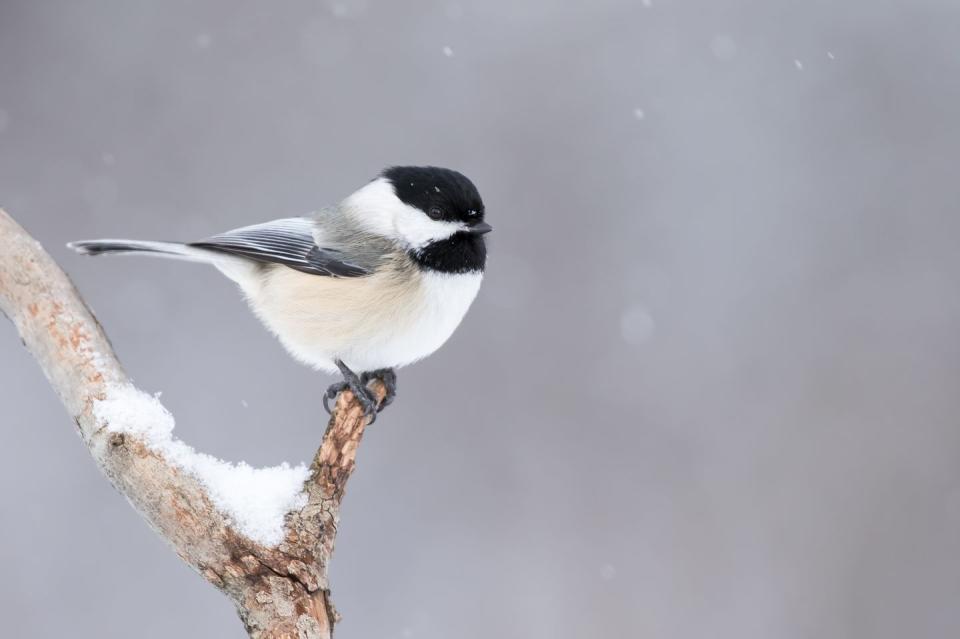In Case You're Wondering, Here's Why Birds Don't Freeze in the Winter

Thanks to the polar vortex that's turned most of the country into a frozen tundra this week, most us just barely eked out getting to work in sub-zero (or in some cases, -30º F) temps. But while us humans bundle up in every layer known to man, you wonder how birds that don't flight to warmer climates can endure air so cold it can cause frostbite within minutes.
It turns out, our feathered friends come self-equipped for bitter winters. And it starts right there with the feathers: "Birds’ feathers provide remarkable insulation against the cold," Peter Marra, head of the Smithsonian Migratory Bird Center at the National Zoo, told the Smithsonian Insider. "The oil that coats feathers also provides waterproofing, which is important since the only thing worse than being cold is being cold and wet."
This weatherproof layer traps heat against the body, an effect enhanced by fluffing up the feathers. (Ever notice that birds look a little puffier in winter time?) Underneath the down, a layer of fat acts as both insulation and an energy source for when food supplies get lean.

Birds don't rely on insulation as their only strategy though. They're warm-blooded like us, but some species will let their body temperatures drop overnight to save even more energy - an effect similar to hibernation but on a lesser scale. According to the National Audubon Society, black-capped chickadees can lower their internal thermostats by as much as 22º F after dark!
Another cool physiological adaptation: Birds will "shiver," but not like us. They activate and contract opposing muscles, which helps retain heat without actually moving around too much.
Ducks and other waterfowl employ special techniques too to prevent their webbed feet from freezing. "They have a counter-current heat exchange system in their legs," Marra explained. "Veins and arteries in the leg are close to each other, and as warm blood leaves the body, it heats up the cold blood returning to the body. It’s brilliant!"
What's more, they can even minimize circulation in their extremities (i.e., the parts closest to the ice and snow) and prioritize blood flow around vital organs. Standing on one leg also enables the other one to warm up tucked against the body. Then they switch back and forth.

These evolutionary adaptations go a long way, but sheltering techniques can also help combat particularly rough environments. Birds will seek refuge in thick foliage, tree cavities, or manmade houses. In more open spaces, flocks will crowd together for warmth and roost in groups overnight.
How You Can Help
While birds have found ways to endure incredibly harsh conditions, you can still help them out this winter by supplying energy-rich foods, the U.S. Fish and Wildlife Service advises.
Audubon recommends mixed seeds or black oil sunflower seeds for attracting chickadees and finches and hanging a suet feeder for woodpeckers. Larger species like cardinals prefer safflower or sunflower seeds. Birds rely on these food sources most heavily during the colder months, so don't let the temperatures outside discourage you from refilling your feeders. The birds will thank you!
('You Might Also Like',)

